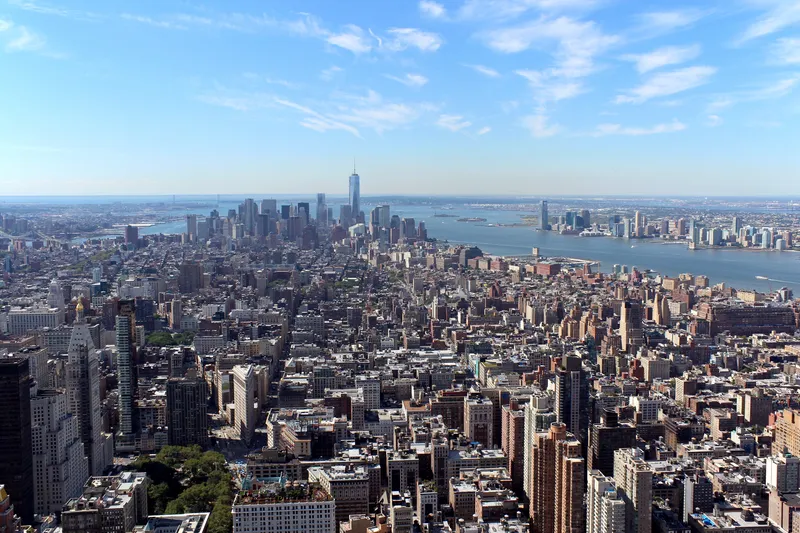According to New York City Department of Transportation’s (NYC DOT) 2016 Cycling in the City brief, New York City has seen a recent dramatic increase in cycling, with the claim that the city has seen a 320 per cent increase in daily cycling between 1990 and 2014 and a 68 per cent growth in daily cycling between 2010 and 2014.
The brief uses data collected by the Department of Health and Mental Hygiene (DOHMH) as part of its annual Community Health Survey, where 25 per cent of adult New Yorkers (almost 1.
May 10, 2016
Read time: 2 mins
According to 5590 New York City Department of Transportation’s (NYC DOT) 2016 Cycling in the City brief, New York City has seen a recent dramatic increase in cycling, with the claim that the city has seen a 320 per cent increase in daily cycling between 1990 and 2014 and a 68 per cent growth in daily cycling between 2010 and 2014.
The brief uses data collected by the Department of Health and Mental Hygiene (DOHMH) as part of its annual Community Health Survey, where 25 per cent of adult New Yorkers (almost 1.6 million) reported riding a bike at least once in the last year, and 12 per cent (778,000) rode at least several times a month, a number that has expanded by 49 per cent since 2009.
It claims that this growth has also contributed to safer cycling: data show that the risk to New York City cyclists of a serious injury or fatality has been reduced 72 per cent over the last fifteen years.
City officials claim this is mainly due to the efforts made to expand the city’s bicycle infrastructure since the mid-1990s, when NYC DOT established a bicycle program to oversee development of the city’s cycle network.
Since then, NYC DOT has built a cycle network that serves an ever-growing number of New Yorkers and, since 2010 has expanded and enhanced the on-street bike network by nearly 300 miles, including more than 40 protected lane miles, with a record 12 miles installed in 2015. The report indicated that NYC DOT is on track to install even more protected lanes in 2016, with over 15 new miles planned.
Brooklyn has seen the greatest percentage growth in cycling; between 2010 and 2014, cycle commutes increased by 75 per cent, from 10,494 to 18,317. In the same period, cycle commuters in Manhattan increased by 68 per cent, from 8,997 to 15,088, alongside Queens which also saw a 68 per cent increase from 3,764 to 6,342.
Meanwhile, the city’s bike share program, Citi Bike, saw a 23 per cent growth in daily use between 2014 and 2015, from 22,172 in 2010 to 27,287 in 2014. According to CEO and President of Motivate, which operates Citi Bike, the company plans to expand into new neighbourhoods, growing to 12,000 bikes by the end of 2017.
The brief uses data collected by the Department of Health and Mental Hygiene (DOHMH) as part of its annual Community Health Survey, where 25 per cent of adult New Yorkers (almost 1.6 million) reported riding a bike at least once in the last year, and 12 per cent (778,000) rode at least several times a month, a number that has expanded by 49 per cent since 2009.
It claims that this growth has also contributed to safer cycling: data show that the risk to New York City cyclists of a serious injury or fatality has been reduced 72 per cent over the last fifteen years.
City officials claim this is mainly due to the efforts made to expand the city’s bicycle infrastructure since the mid-1990s, when NYC DOT established a bicycle program to oversee development of the city’s cycle network.
Since then, NYC DOT has built a cycle network that serves an ever-growing number of New Yorkers and, since 2010 has expanded and enhanced the on-street bike network by nearly 300 miles, including more than 40 protected lane miles, with a record 12 miles installed in 2015. The report indicated that NYC DOT is on track to install even more protected lanes in 2016, with over 15 new miles planned.
Brooklyn has seen the greatest percentage growth in cycling; between 2010 and 2014, cycle commutes increased by 75 per cent, from 10,494 to 18,317. In the same period, cycle commuters in Manhattan increased by 68 per cent, from 8,997 to 15,088, alongside Queens which also saw a 68 per cent increase from 3,764 to 6,342.
Meanwhile, the city’s bike share program, Citi Bike, saw a 23 per cent growth in daily use between 2014 and 2015, from 22,172 in 2010 to 27,287 in 2014. According to CEO and President of Motivate, which operates Citi Bike, the company plans to expand into new neighbourhoods, growing to 12,000 bikes by the end of 2017.









